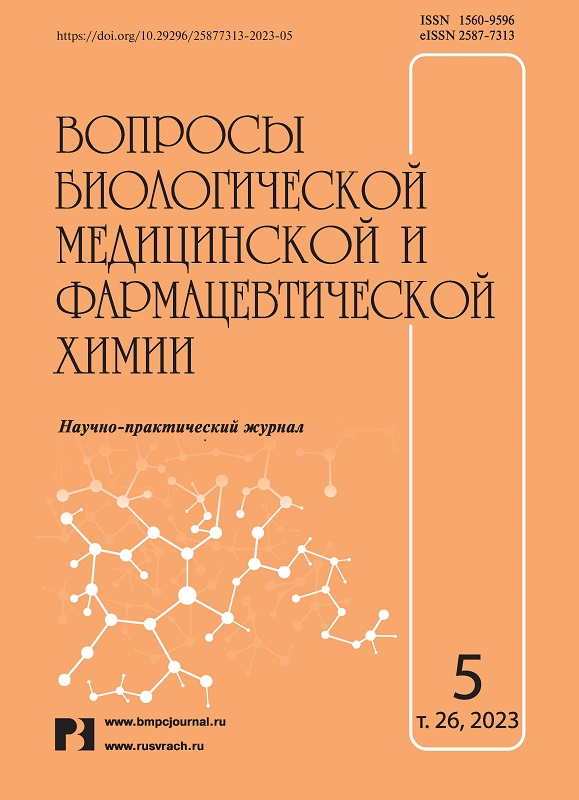Stress-protective activity of the complex remedy in acute immobilization stress
- 作者: Shantanova L.N.1, Lubsandorzhieva P.B.1, Baldandorzhieva M.V.1, Alekseeva E.A.2, Dargaeva T.D.3
-
隶属关系:
- Institute of General and Experimental Biology SB RAS
- D. Banzarov’s Buryat State University
- All-Russian Scientific Research Institute of Medicinal and Aromatic Plants
- 期: 卷 26, 编号 5 (2023)
- 页面: 48-52
- 栏目: Problems of experimental biology and medicine
- URL: https://journals.eco-vector.com/1560-9596/article/view/456490
- DOI: https://doi.org/10.29296/25877313-2023-05-08
- ID: 456490
如何引用文章
详细
Relevance. The range of medicinal remedies in the traditional Tibetan medicine contains several tens of formulae named bchud len. They are multicomponent remedies of natural origin having a stimulating non-specific effect on the human body. The analysis of such formula under the name ‘Rejuvenating-35’ has been presented in the paper. The complex remedy on the base of this formula was developed. Its composition includes 14 species of the plants and chitosan as a source of mineral substances. Previous phytochemical studies have revealed that the given remedy contains a wide spectrum of biologically active substances, namely triterpene saponins, flavonoids, ether oils, tannins, polysaccharides, etc.
The aim of the present work was to evaluate stress-protective activity of the complex remedy in acute restraint stress.
Material and methods. Experiments were carried out on white Wistar rats. The acute stress was simulated by immobilization of animals in supine position for 18 hours. The tested remedy was introduced in the form of decoction for 7 days before exposure to stress.
Results. It has been established that the course administration of the complex remedy decreases the manifestation of the Selye’s triad signs: 26% decrease of adrenal glands hypertrophy, 45% and 60% decrease in involution of thymus and spleen respectively as compared to the data in the control group of animals. Besides, its administration prevents the development of rough destructions in the stomach mucosa in the form of erosions and linear ulcers. Against the background of the complex remedy administration there was noted twofold decrease of TBA-active products concentration, fourfold increase of superoxide dismutase activity, 30% increase of catalase activity and the content of the reduced glutathione was 30% increased as compared to the data in the control.
Conclusions. The preventive administration of the complex remedy has stress-protective effect against the background of acute restraint stress. Molecular-cell mechanisms of its antistress effect are connected with the inhibition of free-radical oxidation processes and the increased activity of the endogenic antioxidant system.
全文:
作者简介
L. Shantanova
Institute of General and Experimental Biology SB RAS
编辑信件的主要联系方式.
Email: shantanova@mail.ru
D.Sc. (Biol.), Professor, Head of the Laboratory
俄罗斯联邦, Ulan-UdeP. Lubsandorzhieva
Institute of General and Experimental Biology SB RAS
Email: bpunsic@mail.ru
D.Sc. (Pharm.), Senior Research Scientist
俄罗斯联邦, Ulan-UdeM. Baldandorzhieva
Institute of General and Experimental Biology SB RAS
Email: shantanova@mail.ru
Post-graduate Student
俄罗斯联邦, Ulan-UdeE. Alekseeva
D. Banzarov’s Buryat State University
Email: alecseevaelvira@mail.ru
Ph.D. (Med.), Associate Professor, Head of Department
俄罗斯联邦, Ulan-UdeT. Dargaeva
All-Russian Scientific Research Institute of Medicinal and Aromatic Plants
Email: alecseevaelvira@mail.ru
D.Sc. (Pharm.), Professor, Chief Research Scientist
俄罗斯联邦, Moscow参考
- Forman H.J., Zhang H. Targeting oxidative stress in disease: promise and imitations of antioxidant therapy. Drug Discovery. 2021; 20: 689-709.
- Panossian A.G., Efferth T., Shikov A.N., et al. evolution of the adaptogenic concept from traditional use to medical systems: pharmacology of stress- and aging-related diseases. Med. Res Rev. 2021; 41: 630–703.
- Онцар-гадон-дэр-дзод – тибетский медицинский трактат. Пер. с тиб. Новосибирск: Наука, Сибирское отделение. 1989; 161 с. [Oncar-gadon-der-dzod – tibetskij medicinskij traktat. Per. s tib. Novosibirsk: Nauka, Sibirskoe otdelenie. 1989; 161 s.]
- Патент 2516886 РФ. Средство, обладающее адаптогенной и иммуно-модулирующей активностью; заявл. 03.04.2014; опубл. 20.05.2014. [Patent 2516886 RF. Sredstvo, obladayushchee adaptogennoj i immuno-moduliruyushchej aktivnost'yu; zayavl. 03.04.2014; opubl. 20.05.2014.]
- Амосова Е.Н., Зуева Е.П., Разина Т.Г. и др. Поиск новых противоязвенных средств из растений Сибири и Дальнего Востока. Экспериментальная и клиническая фармакология. 1998; 6: 31–5. [Amosova E.N., Zueva E.P., Razina T.G. i dr. Poisk novyh protivoyazvennyh sredstv iz rastenij Sibiri i Dal'nego Vostoka. Eksperimental'naya i klinicheskaya farmakologiya. 1998; 6: 31–5.]
- Kikugawa K., Kojima T., Yamaki S., et al. Interpretation of the thiobarbituric acid reactivity of rat liver and brain homogenates in the presence of ferric ion and ethylenediaminetet-raacetic acid. Analyt. Biochem. 1992; 202: 249–55.
- Paoletti F., Mocali A. Determination of superoxide dismutase activity by purely chemical system based on NAD(P)H oxidation. Methods in Enzymology. 1990; 186: 209–20.
- Гирин С.В. Модификация метода определения активности каталазы в биологических субстратах. Лабораторная диагностика. 1999; 4: 45–46. [Girin S.V. Modifikaciya metoda opredeleniya aktivnosti katalazy v biologicheskih substratah. Laboratornaya diagnostika. 1999; 4: 45–46.]
- Shaik I.H., Mehvar R. Rapid determination of reduced and oxidized glutathione levels using a new thiol-masking reagent and the enzymatic recycling method: Application to the rat liver and bile samples. Anal. Bioanal. Chem. 2006; 385 (1): 105–113.
- Maphete N., Unuofin J.O., Masuku N.P. Medicinal uses, pharmacological activities, phytochemistry, and the molecular mechanisms of Punica granatum L. (pomegranate) plant extracts: A review. Biomedicine & Pharmacotherapy. 2022; 153: 113256.
- Shikov A.N., Pozharitskaya O.N., Makarova M.N., et al. Bergenia crassifolia (L.) Fritsch. pharmacology and phyto-chemistry. Phytomedicine. 2014; 21(12): 1534–42.
- Liang D., Feng B., Li N., et al. Preparation, characterization, and biological activity of Cinnamomum cassia essential oil nano-emulsion. Ultrasonics Sonochemistry. 2022; 86: 106009.
- Rjput S.B., Tonge M.B., Mohan Karuppayil M. An overview on traditional uses and pharmacological profile of Acorus calamus Linn. (Sweet flag) and other Acorus species. Phytomedicine. 2014; 21: 268–276.
- Ashokumar K., Murugana M., Dhanyaa M.K., Warkenti T.D. Botany, traditional uses, phytochemistry and biological actities of cardamom [Elettaria cardamomum (L.) Maton]. A critical review. Journal of Ethnopharmacology. 2020; 246: 112244.
- Dugasani S. Pichika M.R., Nadarajah V.D., et al. Comparative antioxidant and anti-inflammatory effects of [6]-gingerol, [8]-gingerol, [10]-gingerol and [6]-shogaol. Journal of Ethnopharmacology. 2010; 127: 515–20.
- Petkova N., Vrancheva R., Mihaylova D., et al. Antioxidant activity and fructan content in root extracts from elecampane (Inula helenium L.). J. BioSci. Biotechnol. 2015, 4(1): 101–107.
补充文件





